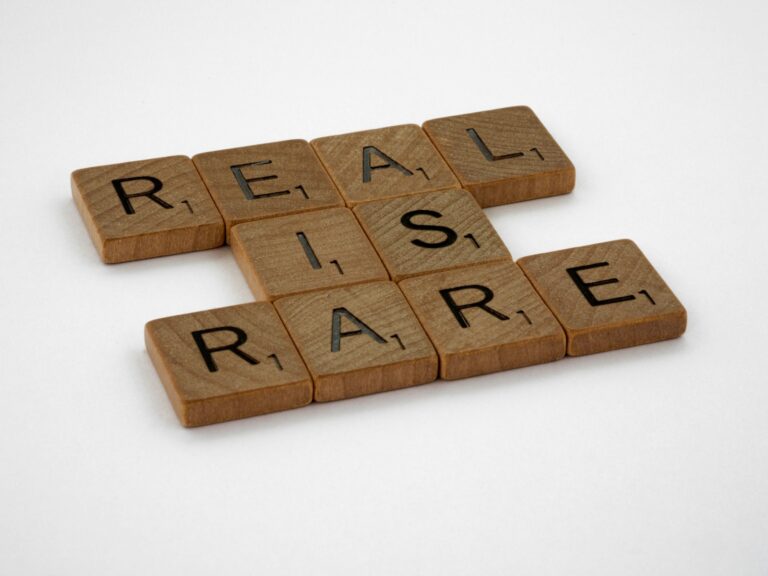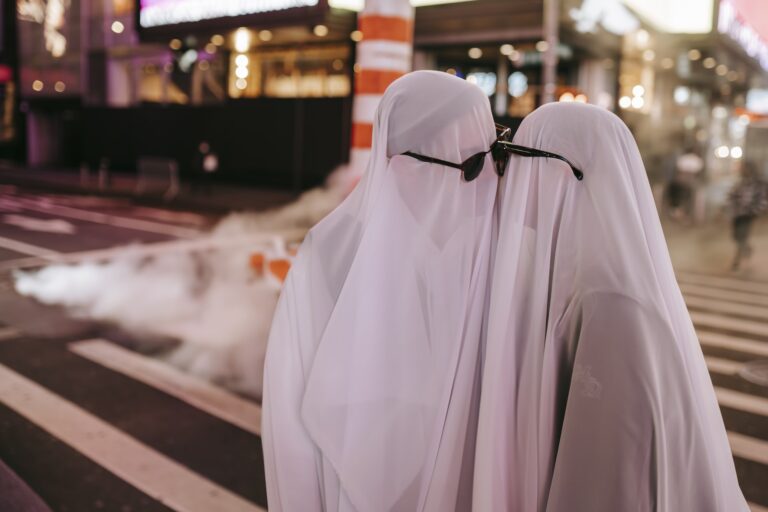Introduction
Welcome, dear readers, to a fascinating exploration of how context plays a crucial role in shaping our sense of status. In the grand theater of life, where we all play our parts, context serves as the ever-changing backdrop that influences how we perceive and are perceived by others. Status, that elusive social currency that can elevate or diminish us in the eyes of our peers, is not a static entity but rather a fluid construct that ebbs and flows with the contexts we find ourselves in.
Brief Overview of the Concept of Context in Shaping Status
Let’s start by unpacking this idea a bit more. When we talk about “context,” we’re referring to the myriad factors in our surroundings that impact how we are viewed within a specific setting.
Think of it like being an actor on different stages – your role and importance vary depending on whether you’re performing in a bustling city street or an intimate theater hall. Similarly, our status is malleable, adapting to the context like a chameleon changing its colors to blend into its environment.
The interconnected dance between context and status is as old as human civilization itself.
From ancient tribal societies to modern corporate boardrooms, where you stand on the social ladder is often determined by where you are and who you’re with. The clothes you wear at a fancy gala convey a different status message than your comfy loungewear at home binge-watching Netflix. Understanding how these contextual cues influence our perception of status can provide valuable insights into human behavior and interaction dynamics.
Workplace Dynamics and Hierarchies
When it comes to status in different environments, the workplace is a fascinating arena where hierarchies are established and power dynamics play out. In most organizations, there is a clear structure of authority, with managers and executives holding higher status positions than entry-level employees. This hierarchy often dictates how decisions are made, who gets promoted, and how individuals interact with one another.
In the workplace, status can be influenced by factors such as job title, years of experience, and level of education. Employees may also vie for status through their performance on projects, ability to lead teams effectively, or by cultivating strong relationships with key decision-makers.
Workplace politics can come into play as individuals navigate the delicate balance of asserting their expertise while respecting those in positions of greater authority. Moreover, office culture and company values can impact how status is perceived within a workplace.
Some organizations prioritize collaboration and teamwork over individual achievements, while others reward competitiveness and ambition. Understanding the nuances of workplace dynamics is crucial for anyone looking to navigate the complex web of status relationships within an organization.
Social Circles and Peer Groups
Transitioning from the professional realm to social circles and peer groups reveals a different landscape of status dynamics. Among friends or acquaintances, status can be less formal but equally influential on social interactions. Within these circles, individuals may establish their standing based on factors like popularity, sense of humor, shared interests or hobbies.
In many social settings, peer groups may have unwritten rules or norms that dictate who holds higher or lower status within the group. For example, in a group of friends who enjoy outdoor activities like hiking or camping together regularly might hold high regard for those with extensive experience in wilderness survival skills or trail mapping expertise.
Status in social circles can also shift over time based on changing dynamics within the group – new members joining might disrupt existing hierarchies or introduce fresh perspectives that challenge established norms. Navigating these ever-evolving landscapes requires emotional intelligence and adaptability to maintain positive relationships while asserting one’s individual identity.
Family Structures and Roles
The concept of status within family structures delves into deeply ingrained roles that have been shaped by tradition as well as modern influences. Within families, individuals often occupy specific roles dictated by age, gender norms cultural expectations. Parents typically hold authority over children due to their role as caregivers and providers; however sibling dynamics also play a crucial role in establishing hierarchies within families.
Status within families can be influenced by factors such as birth order – where firstborns may carry more responsibility or expectations compared to younger siblings – or cultural traditions that emphasize respect for elders or matriarchs/patriarchs The distribution of tasks like household chores caregiving duties further reinforces these roles subconsciously dictating perceived statuses among family members Furthermore external influences like economic hardships societal changes can alter traditional family structures/status quo creating tensions shifting power dynamics. Navigating familial hierarchies requires sensitivity empathy understanding each member’s unique perspective experiences Members must balance asserting their own autonomy challenging outdated norms preserving harmonious relationships essential maintaining healthy family dynamic Status shifts inevitable growing evolving together communicating openly honestly paramount forging strong bonds resilience mutual support amidst changing familial landscapes
Cultural Norms and Values: Navigating the Tapestry of Status
When it comes to status perception, cultural norms and values play a pivotal role. Every society has its own set of unwritten rules that dictate how status is perceived and attributed.
In some cultures, age and seniority hold utmost importance, while in others, individual achievements or material wealth reign supreme. Understanding these nuances is crucial in decoding the complex web of status dynamics.
Diving deeper into cultural norms and values, we find that concepts like collectivism versus individualism can significantly impact how status is viewed. In collectivist societies, group harmony and cohesion are valued above personal accomplishments, leading to a more egalitarian distribution of status.
On the contrary, individualistic cultures often emphasize competition and personal success as markers of high status. Recognizing these differences can help us navigate diverse social landscapes with greater sensitivity and insight.
Communication Styles and Nonverbal Cues: The Silent Language of Status
Communication styles and nonverbal cues serve as subtle yet powerful indicators of one’s status within a given context. The way we speak, our body language, gestures, and even eye contact can convey messages about our social standing without uttering a single word. In some cultures, direct communication is seen as assertive and indicative of high status, while in others, indirect communication is valued for its subtlety and tact.
Moreover, nonverbal cues such as posture, facial expressions, handshakes, or even personal space boundaries can influence how we are perceived in terms of status. A firm handshake may signal confidence and authority in one culture but come across as aggressive in another.
Being attuned to these nuances helps us adapt our communication style effectively across different social contexts. Mastering the silent language of nonverbal cues can be a powerful tool in navigating the intricate dance of status dynamics.
Power Dynamics and Social Capital: Unveiling the Currency of Influence
Power dynamics and social capital form the backbone of status attribution in many environments. Individuals who hold positions of authority or wield influence within their social networks often enjoy higher perceived status due to their ability to shape decisions or access valuable resources.
This dynamic interplay between power structures and social connections underscores the importance of understanding who holds sway within a given context. Social capital refers to the networks we belong to and the relationships we nurture over time – it represents an invisible currency that can enhance or diminish our perceived status.
Building strong ties with influential individuals or being part of exclusive circles can boost one’s social capital significantly. Recognizing the intricacies of power dynamics at play allows us to leverage our connections wisely and navigate complex webs of influence with finesse.
The Role of Contextual Cues in Status Attribution
Dress Codes and Grooming Standards: Fashioning Your Status
When we step into a room, our attire speaks volumes before we even utter a word. Dress codes and grooming standards play a significant role in how others perceive our status within a particular environment.
In corporate settings, a tailored suit and polished shoes might signal authority and professionalism, while in more laid-back social gatherings, trendy streetwear could convey a sense of high social standing. The colors we choose to wear, the accessories we adorn ourselves with, all contribute to the complex language of fashion that communicates our status without us having to say a word.
Physical Environment and Spatial Arrangements: Setting the Stage for Status
The physical setting in which interactions take place can also influence how status is attributed. Think about walking into an opulent mansion versus a cozy café – the grandeur of the former may automatically elevate your perceived status compared to the casual setting of the latter.
Spatial arrangements within a room, such as seating arrangements during meetings or events, can also subtly impact status dynamics. Those seated at the head of the table may be seen as having more authority or importance than those sitting on the sidelines.
Language Use and Dialects: Speaking the Language of Status
Language is not merely about communication; it is also a tool for showcasing one’s status within different contexts. The way we speak, our choice of words, accents, and even slang can all contribute to how others perceive us in terms of status.
In some social circles, using formal language may be seen as prestigious, while in others, peppering conversations with colloquialisms could signal belonging and insider status. Dialects specific to certain regions or communities can also carry connotations of heritage or upbringing that influence perceived social standing.
Impact of Technology on Shifting Contexts
Virtual Environments and Online Status Markers
In today’s digital age, virtual environments play a significant role in shaping our perceptions of status. From online gaming platforms to virtual reality social spaces, individuals can create and project personas that may differ from their real-life identities.
In these virtual worlds, status markers such as achievements, badges, and levels can influence how others perceive and interact with us. The ability to curate our online presence allows for a certain level of control over the status we project.
Social Media Influence on Perceived Status
Social media has revolutionized the way we communicate and connect with others, impacting how status is perceived in modern society. Platforms like Facebook, Instagram, and Twitter have become virtual stages where individuals showcase their lifestyles, accomplishments, and social circles.
The number of followers, likes, and shares can serve as indicators of one’s perceived status within their online community. Moreover, influencers and celebrities on social media often set trends and shape societal norms related to status symbols like fashion, travel destinations, or lifestyle choices.
Globalization’s Effect on Contextual Boundaries
Globalization has blurred traditional boundaries by creating a more interconnected world where cultural influences can transcend geographical limitations. This interconnectedness has led to the exchange of ideas, values, and practices across different cultures. As a result, notions of status have evolved to encompass diverse perspectives from around the globe.
Globalization has also introduced new forms of competition as individuals now compare themselves not only within local contexts but also against global standards of success. The increasing mobility of people across borders has further enriched our understanding of status by exposing us to varied ways in which it is defined and perceived in different parts of the world.
Embracing the Fluidity of Status
Adapting and Evolving in Dynamic Environments
In the dynamic tapestry of life, one thing remains constant: change. Status is not a fixed entity but a fluid concept that ebbs and flows with the tides of different contexts.
Embracing this fluidity allows us to adapt and evolve, navigating the intricate web of social hierarchies with grace and flexibility. It’s like learning to dance to the ever-changing rhythm of life, adjusting our steps as we move through various environments.
Redefining Success Beyond Traditional Measures
As we ponder the complex interplay between status and context, it becomes evident that success is not solely defined by traditional markers such as wealth or power. True success lies in our ability to cultivate meaningful relationships, foster genuine connections, and leave a positive impact wherever we go. By redefining our understanding of success beyond materialistic measures, we open ourselves up to a world of endless possibilities where status becomes a reflection of our character rather than external trappings.
Optimism in Diversity and Inclusion
In embracing the fluid nature of status within various contexts, we uncover a beautiful tapestry woven with threads of diversity and inclusion. Each individual brings a unique perspective to the table, enriching our collective experience with their stories and backgrounds.
Through acknowledging and celebrating this diversity, we create a more vibrant and harmonious society where everyone has a chance to shine regardless of their perceived status. Let us walk forward with optimism, knowing that every interaction holds the potential for growth, connection, and mutual understanding.






